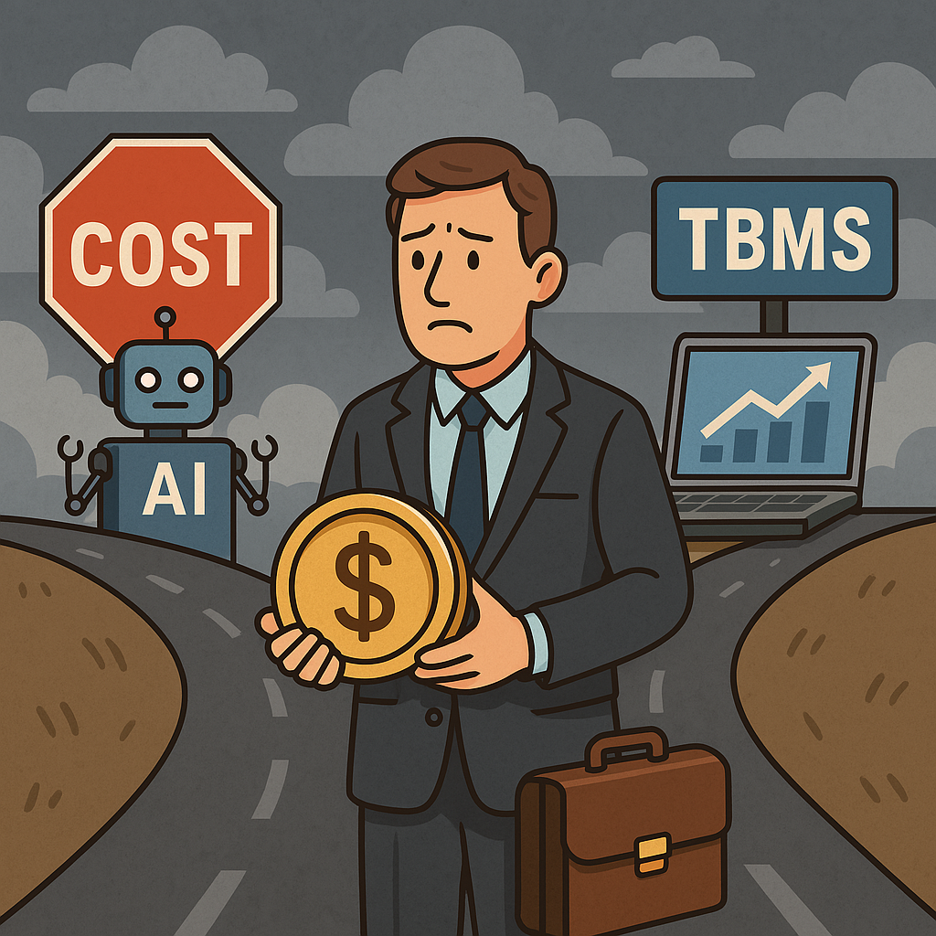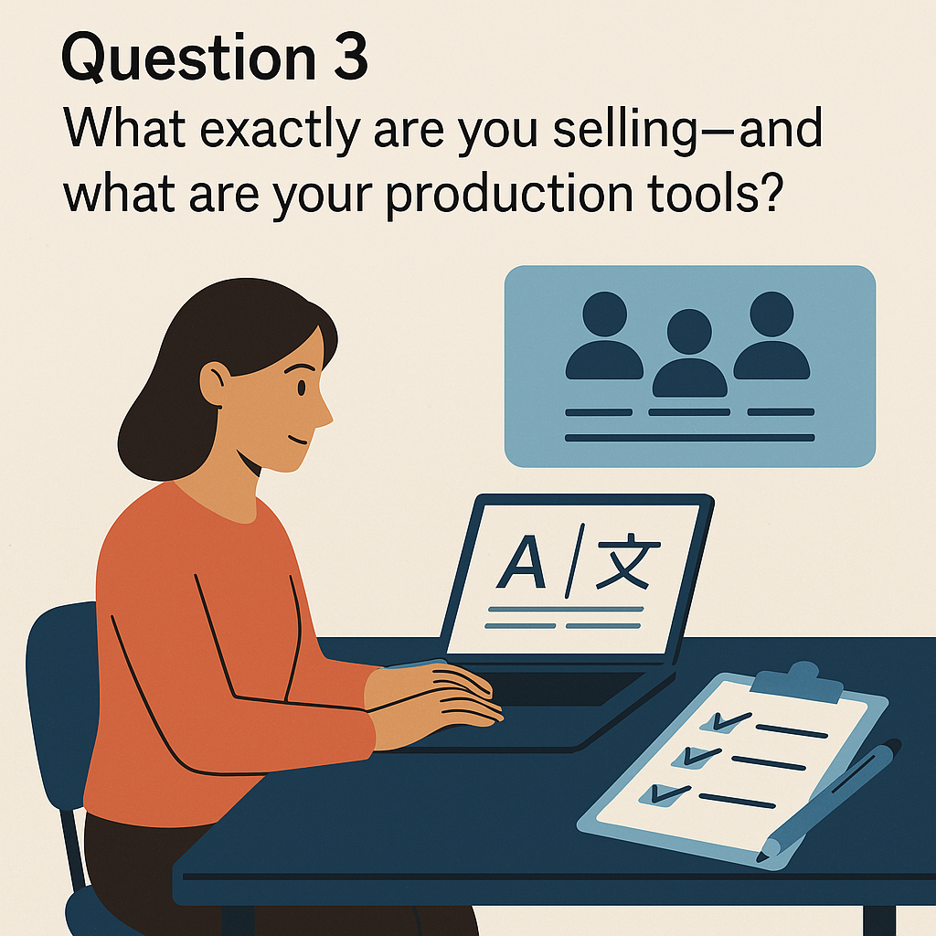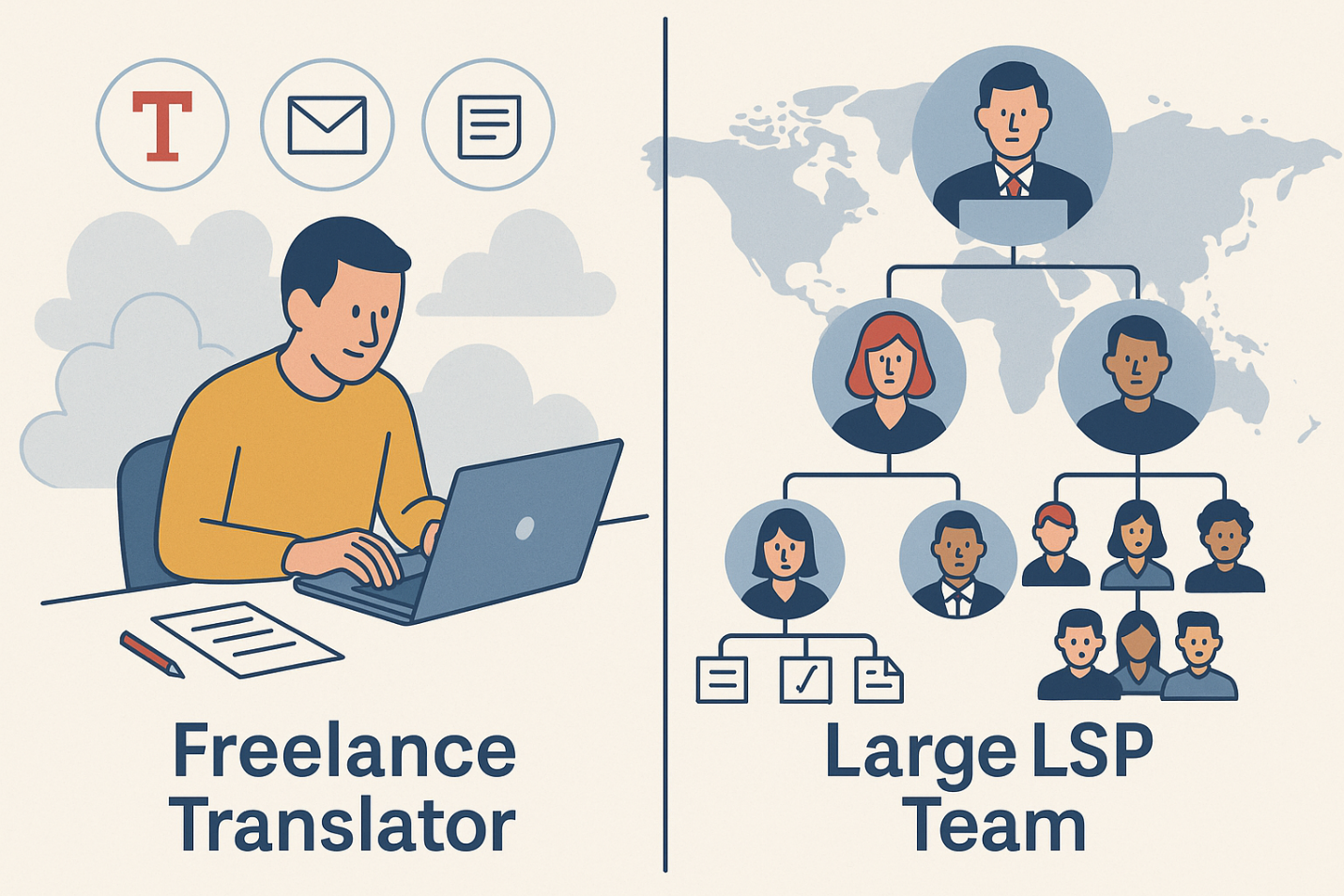
This article is inspired by a message we received from Protemos competitors:
“From our conversations with LSPs, most TBMS tools fall into two categories:
- Too basic. They don’t cover the whole business
- Too complex & expensive. Hard to use, with hidden costs
That’s why we built something easy to use, fairly priced, and covering all the essentials (projects, vendors, clients, invoicing).”
Then comes a call to action and an invitation for a demo. We would like to elaborate on this, because it’s quite manipulative.
Question 1. Are you planning to stay in business?

This is the key question you need to answer. The only situation where adopting new software tools and learning about new technologies makes no sense is if you're planning to quit. Whether that means selling your LSP or gradually scaling it down until the flow of orders drops to zero—why invest time and money into a new translation business management system? You’re harvesting the final crop and won’t need tools for the next season.
In all other cases, adapting to the market is essential to remain competitive. Even a crisis and a drop in orders can be an opportunity for restructuring and process optimization. Fewer orders mean you may have more free hands at the moment—so it’s a good time to do the things you’ve never had time for. And implementing a new management tool is one of those things.
Question 2. Technology is disrupting your business, and you choose to cut costs on… technology? Is that the solution?
One of the reasons some LSPs are seeing a drop in volume is technological disruption—especially the rise of AI tools. Heard the “AI will replace translators” panic? Look at history: people have always panicked when new technologies emerged. And yes, those technologies did change economies and jobs—but did they destroy industries?
Did farmers disappear when tractors were invented? No, they started using tractors, and those who stuck with horses became uncompetitive. Technology always demands qualified operators.
Now think about it: AI “tractors” are coming, and your strategy is to cut back on technology? How will you compete? If you're still using Excel spreadsheets and email instead of a TBMS, how do you plan to compete with LSPs that embraced automation?
Question 3. What exactly are you selling—and what are your production tools?
You’re not just selling linguistic services like translation, editing, voice-over, or dubbing.
You are selling management.
Clients don’t come to you just to get a translated text—they come for you to manage the process. If they only wanted linguists, they could go to a job portal, post a job, and walk away. But they can’t be sure the translator they find is qualified, reliable, or will deliver on time. They may not understand the professional workflows and tools involved. Often, they need someone to coordinate a team of linguists. That’s what they’re paying you for—not just the translation or editing itself.
So, if your main product is translation management, then your primary production tool should be something that makes this management more efficient, less time-consuming, and more cost-effective. That’s what translation business management systems (TBMS) do.
Question 4. Are you treating business expenses as investments—or just… expenses?
Now, let’s talk money. There are two things you can do with it: spend or invest.
Spending means buying something for your own enjoyment—like a fancy car, a luxury vacation, or a dinner at a five-star restaurant. In these cases, you don’t consider ROI. You just enjoy.
Investing means putting your money into something that will grow in value—like stocks, real estate, or anything else you expect to generate returns in the future.
Buying tools for your business is an investment.
If you’re a taxi driver, your car is an investment—it’s how you work. If you’re a plumber, investing in quality wrenches makes your job easier and more efficient. You wouldn’t say, “I’ve had fewer clients lately, so I’ll keep working with these old rusty tools.”
It’s the same with LSPs. A translation business management system is a tool—and therefore an investment, not just an expense. Ideally, every business expense should be considered an investment—even something like a team barbecue, which can boost morale and improve retention.
You should be calculating ROI, not just looking at price.
For example, if your project manager’s hourly rate is €20, and a TBMS license costs €60 per month, it pays for itself if it saves just three hours of work. In reality, it saves much more by automating countless actions—not just for project managers, but also for your entire team, up to the CEO who gains visibility over operations.
Summary
This means your team can work faster and free up time. You can either take on more work with the same team—or do the same amount of work in fewer hours.
It’s up to you how you use that extra time—but either way, you win.
Automation and time savings make you more competitive. Every minute counts.





.png)

.png)

